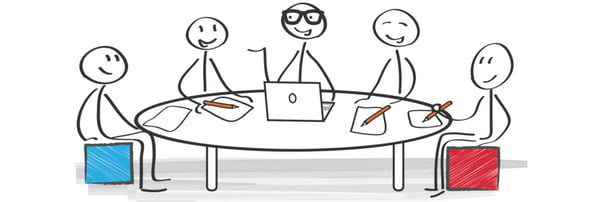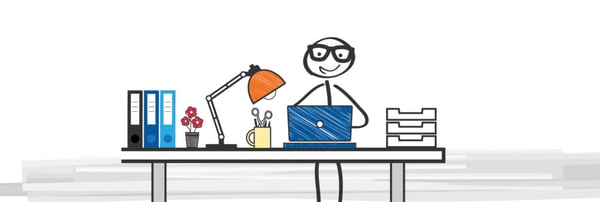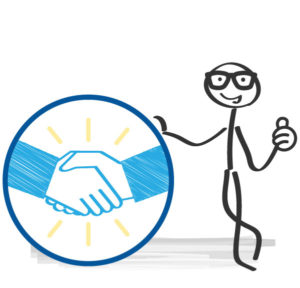According to numerous surveys, online consumers today prefer push notifications over email when it comes to marketing messages. This article will guide you in how to get the most out of your web push notification marketing efforts.
According to a recent survey by Responsys,
"70% or more of consumers found all types of push notifications, including order updates and location-based updates, to be valuable."
What you'll learn in this article…
Understanding and getting the basics right is tantamount to success with web push notifications. We'll help you get started in mastering the basics. In this article, we'll discuss how to set the right goals; perform a basic analysis the behaviors of your website visitors in order to develop an effective web push notification strategy; methods for segmenting your subscribers into related groups; and how to personalize messages aimed at each different group.
Getting started with web push notification marketing
If you're completely new to web push notifications, please first read our article: Web Push Notifications: What They Are and Why Advertisers Need Them to understand what web push notifications are all about and how they differ from email.
The above article will explain all the strengths of web push notifications and how they are advantageous for your marketing efforts.
Opt-ins are higher for web push notifications
One important reason for using web push notifications is that your visitors are more likely to use opt-in to receive them versus email. As email sign-ups decline and attrition rates increase, web push notifications have arrived just in time to offset this trend.
According to a survey by Responsys:
"Open rates for push notifications are 50% higher than email and click rates are twice as high."
Tips for Developing Your Push Notification Strategy
Using web push notifications is not all that complicated and your push notification strategy can be simplified down to these 4 essential goals:
- Get visitors on board
- Delight your subscribers
- Improve your marketing results (and/or drive sales)
- Keep your subscribers on board
Step 1: Outline Your Strategy
Foremost, your web push notification strategy must mirror your marketing goals. In order to align the two, ask the following questions, listed below.
Specific goals
What are the specific goals of your web push notification marketing needs to achieve?
Here are just a few examples of the possible web push notification goals that may fit your marketing strategy:
- Driving sales
- Encouraging newsletter sign-ups
- Promoting free downloads
- "Upselling" items or add-ons
- Encouraging referrals (rewards, affiliates, friends, and family, etc.)
- Reminding users that a registration or trial period is about to expire.
Step 2: Understanding Visitor Behavior
A. Study and analyze your website visitor activity
As mentioned earlier, we'll discuss the topic of in-depth analysis and optimization of your web push notification marketing efforts in another article.
However, in getting started… You do need to engage in some general analysis of your website visitors as part of developing your web push notification strategy.
A basic analysis
You'll need to have a general sense of how visitors on your site behave. Here are a few things to look for:
Doorway pages: What pages are the most popular arrival pages for your visitors?
Where do visitors go next? After landing at one of your "doorway pages" – what are the most popular secondary pages your visitors go to next?
Popular pages: Whether they are entry points or not, which are the most visited pages on your website?
Exit pages: Which pages are the most common pages for visitors to leave your site from?
B. Trigger points
What are the web push notification trigger points that occur in your user's experience?
"Trigger points" refers to an action your visitor might take, which in turn "triggers" the sending of a web push notification. A few examples are: Arriving at a specific page on your website, downloading information, placing an item in a shopping cart without completing the purchase, etc.
Also ask yourself: What activities will users be taking on your site or app that indicate the best times to send a web push message?
Triggers for web push notification could include:
- Viewing an important piece of content
- Signing up for a newsletter or mailing list
- Signing up for a free course or download
- Placing an item in the shopping cart without completing the purchase
- Pre-purchase
- Post-purchase
- Registration, trial-period or subscription about to expire
- Or any other activity you designate as important
Trigger-based messages
As common sense would dictate, the best practice for creating messages that are sent by certain triggers is to make your message to fit each situation in which they are triggered.
We'll get into the subject of segmenting later, but you also need to consider user segments when creating these triggered messages. Even though an activity may be similar – the user engaged in the activity may be quite different from another user, based on an experience level or other factors. Therefore, don't create all triggered messages to be the same for a specific activity. You might also send different triggered messages to different user segments.
C. Messages based around user behavior
Figure out the user behaviors you are looking for and design your push notification messages to occur (trigger) upon these events. This also requires analyzing and understanding your customer journeys.
This is where the subject of personalization comes in, which we'll discuss later. What's important is to make each message as unique as possible to each user. Your messages should enhance the user experience. Thus, your messages should focus on the benefit to the user. When you do this, your user will welcome your web push notifications.
Step 3: Segmentation & User Grouping
Another component of a web push notification marketing strategy you May want to consider is grouping or "segmenting" your subscribers into related groups. While segmenting is not a requirement, if you want to deliver personalized and relevant messages your subscribers will find helpful – then from that standpoint – segmenting is essential.
How to determine user segments
Depending on your business and how your users interact with your website, your subscribers may be different from one another. They may be on different levels in terms of experience, knowledge or where they are in the sales cycle; They may be located in different parts of the country or the world; Some visitors might be more active than others; They may have different needs when it comes to products or services; It may also matter whether they are male, female, or their age range.
When it comes to segmenting users, only you know what is important to your business. There is no one type of segmentation that is right for everyone. That said, here are some examples of different segments you can use as a guideline or create your own according to your needs.
Examples of different segments:
- By geographic location
- male versus female
- age range
- prospect versus existing customer
- experience level
- on-site activity level
- based on previous purchases
- membership level
- based on product interest and/or wishlist
- and many more…
As you can see, it's almost certain that you have different types of visitors as prospects and customers. These different groups will almost certainly require different messages. An expert user may get annoyed at receiving "beginner" messages. Never forget that the more personalized the messages to each user – the more likely they are to find the messages helpful. Therefore, getting the right message to the right user is the way to get the best results. This is achieved through personalization, which we will cover next.
Step 4: Personalizing Your Messages
The key to effective web push notification marketing is creating a good user experience. It requires the right message, at the right time to the right subscriber.
The ability to personalize your messages is something you need to consider when grouping your subscriber segments.
First, you need to think about the mindset and needs of your various website visitors, prospects, and customers. The better you can address their wants and speak to them within their own mindset – the better experience you can provide.
Your web push notifications will largely be triggered by events, behaviors, user profiles and geographic locations. Therefore, your messaging needs to be personalized according to those factors.
Some tips for personalizing your messages:
- Insert the user's name into your message.
- Include a recap of the user's last activity – then guide them towards what's next.
- Allow users to set preferences and then make recommendations based on those preferences at the appropriate time.
- If you sell merchandise, allow users to create wish lists and notify them when saved items are on sale or reward them with a discount.
- Detect the user's location and send location-based messages that are appropriate and helpful.
- Based on your user's current or recent activity, keep your user posted when it's important to do so.
- Reward your user for current or recent activity.
- Remind users where they left off when it's helpful to do so.
Step 5: Tips for Creating Your Messages
No matter what content you create as a web push notification message – first and foremost – it needs to be engaging. Not only that but as a best practice – keep it brief. The best content is direct, brief and irresistible.
Here are some tips to improve your push message strategy:
- Make your message informative
- Keep your message short
- Make your message relative
- Create a memorable message
- Make your message entertaining
- Jokes or catchy phrases can attract the user's attention
- Make your message attention-getting
- All messages should include a clear call-to-action
Messages to boost sales
If your goal is to boost sales, there are 3 types of message strategies work well with web push notifications:
- Time-constrained offers that will vanish within a certain time period or a scarcity approach with "limited availability" whether it be quantity, supply or opportunity.
- Single-use promotion codes.
- A combination of both promotion codes and a time constraint.
Key takeaways:
- Set a goal for your web push notifications to determine what you need your messages to accomplish for your marketing strategy.
- Analyze how your website visitors behave, where they come in, where they go and what they do on your site, as well as, where and why they leave.
- Decide on and prioritize what the actions are that your website visitors will take to trigger the sending of a web push notification.
- Group your visitors into segments based on behaviors, demographics, geolocation, products, purchasing and more, as it applies to your specific business and needs.
- Personalize your messages to tailor them to specific segment groups, as well as, particular triggers or behaviors. Personalize messages as close to the individual level as possible.
- Create brief, concise, direct and irresistible messages to entice your visitors into taking your desired action.
- The goal of your web push notification marketing goal should always strive to be helpful and enhance your subscribers' experiences.
Create a Partnership with Amply Media
Would you like to become one of Amply Media’s trusted brand partners? We would like to be your advertising partner to help advocate your brand, improve loyalty, drive engagement and boost your revenue. We can help you reach your customers even when they aren’t on your app or your website!
Contact Amply Media now and find out what we can do for your brand!





